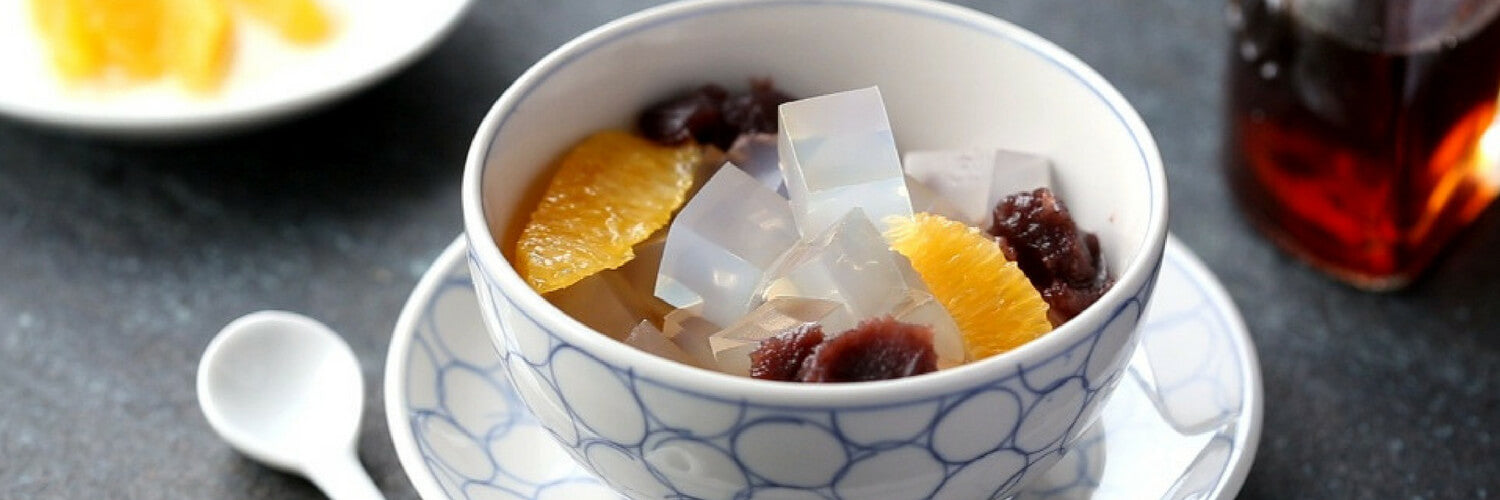
Anmitsu is a popular traditional dessert that is easy to make. You can add more fruits, or even green tea ice cream to make it tastier!
Some authentic Japanese desserts may look a lot different than the American desserts you are used to, but that doesn’t make them any less decadent and delicious. But because there are very few Japanese restaurants in the United States that actually serve more of the traditional Japanese desserts other than the standard mochi or green tea ice cream, you may not get the chance to experience many classic desserts unless you visit Japan.
Or, you could simply try making them yourself! Consider Anmitsu, a traditional Japanese cold dessert that is ideally refreshing during the hotter spring and summer months.
What is Anmitsu?
A number of different components come together to form the complete dish. These include small, jelly-like cubes that might be compared to American Jell-O, which are then topped with assorted fruits, azuki bean paste, ice cream, and a dark, sweet syrup. The dish gets its name from the bean paste (an) and the syrup (mitsu).
There are actually quite a few different variations of the desert, much like there are different ice cream sundae flavors, styles, and toppings that you would find in America. For example, cream anmitsu would refer to anmitsu with cream poured over the top.
Additionally, even though it is not reflected in the name, the jelly cubes (typically known as kanten jelly, although it may be made from another ingredient) are the real star of the dish, tying all the other components together in an umami chorus of texture and flavor.
Differences Between Kanten, Agar, and Gelatin
As mentioned above, the jelly cubes can different ingredients; these include kanten, agar, and gelatin. There are subtle differences between the three, but ultimately produces the same result.
Agar: A powdery substance made from a fiber that is extracted from seaweeds, it is dissolved in water and then solidifies at around 86F – 104F. It usually remains solid in regular indoor/outdoor temperature. Exhibiting a unique soft and smooth texture, and with the highest clarity amongst the three different ingredients, agar’s firmness lies between kanten and gelatin. It also has no taste, but provides an enticing texture to the dish.
Gelatin: If you ever enjoyed Jell-O as a child, you’ll be familiar with gelatin. Made from the collagen from cow or pig bones, it will solidify in temperatures below 68F. However, it starts to melt at about 77F so it usually needs to be kept cold until ready to serve. Then it melts slightly in the warmth of your mouth, offering a smooth and satisfying mouthfeel. It can also absorb bubbles, and so is useful for making desserts with a fluffy texture like mousse or marshmallow. It is obviously not vegetarian.
Kanten: Also made from extract of seaweed, kanten is the firmest of the three, solidifying at 104F-122F. It doesn’t need to stay in the fridge and won’t melt at a regular temperature. The semi translucent jelly contains a good amount of fiber, making desserts that utilize kanten jelly good for dieting, as only a small amount will help you to feel satisfyingly full. Many Japanese desserts, such as wagashi, use kanten. It is also often confused with and substituted for Agar (and vice versa) but the two are made from different seaweeds.
Cooking Tips for Kanten
When using kanten with fruits (either fresh or canned), or with the juice of fruits that might be somewhat sour, be sure to melt the kanten completely, remove from heat, and only add the fruits after the kanten has cooled.
When seasoning kanten with sugar, salt, milk, or other seasonings, add the seasonings after the water boils (1-2 min) and the kanten has dissolved completely.
Anmitsu

Ingredients
- 1 bag (4g) Kanten Powder
- 2 ½ cup Water
- 1 Navel Orange
- Red Bean Paste
- Brown Sugar Syrup
- ¼ cup Granulated Sugar
- ½ cup Brown Sugar
Instructions
- Add the kanten powder and water in a small pot and mix well.
- Turn on the heat while mixing, and once it starts boiling, turn the heat down to low heat.
- Continue mixing for another 2 minutes. Stop the heat and pour mixture into a container. Once cooled down, place it in the fridge for about 3 hours until set.
- Mix all the ingredients of brown sugar syrup in a saucepan. Bring to boil over medium heat.
- Once boiled, reduce heat to low and cook additional 10 minutes.
- Allow syrup to cool down, and keep it in air-tight container. Set it aside.
- Remove the skin from the orange and cut into wedges.
- Take the kanten jelly from the fridge and cut into dice-sized cubes.
- Place jelly cubes in a cup. Add a few orange wedges, several scoops of red bean paste, and pour plenty of syrup and enjoy!
